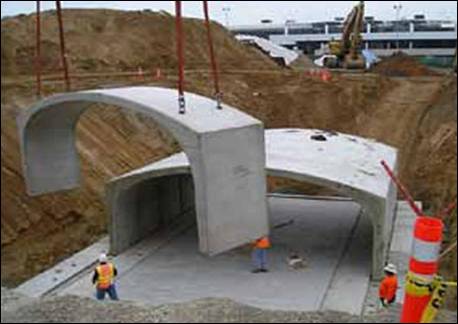Wet Weather Storage at 17th and Folsom
The area around 17th and Folsom is a low-lying part of the city that has experienced historical flooding, negatively impacting area residents and businesses. The San Francisco Public Utilities Commission (SFPUC) manages the City's combined sewer system, which collects and treats both sewage and stormwater in the same set of pipes. The SFPUC has identified the area under the proposed park as the ideal location for a storage basin to help manage stormwater and reduce neighborhood flooding.

Wet Weather Storage Under the Park?
Rec & Park and SFPUC are working together to investigate the feasibility of co-locating the park and the wet weather storage basin in order to provide multiple benefits to the community.
A joint project would:
- Maintain the existing park design developed in the community decision-making process,
- Enable improvements that would enhance the park user's experience, such as an improved entrance and public restroom facilities,
- Manage excess stormwater and reduce neighborhood flooding, including potential flooding of the new park,
- Minimize disruption to the neighborhood by consolidating two construction projects,
- Result in a schedule delay for the park, with completion up to two years later than currently planned, in summer of 2016, and
- Strive to provide an interim community use for the site during the delay before construction.
Next Steps
Rec & Park and SFPUC will present more detailed information on the proposed joint project and interim community use of the site in August, 2013. Stay tuned for more information.
Frequently Asked Questions about the Wet Weather Storage and Park at 17th and Folsom
- Will the wet weather storage project delay the opening of the park?
Yes, the park would be anticipated to open up to two years past the original date, in summer of 2016. However, because two local construction projects would be consolidated into one, the total construction duration and overall impacts to the neighborhood would be lessened. - Will the wet weather storage basin completely eliminate future neighborhood flooding?
The storage basin will reduce the severity of flooding, but no system can be built to completely eliminate flooding in low-lying areas. - What types of interim uses for the site are being considered while construction and planning are underway?
One option under consideration is to construct temporary community gardens on the site. These temporary garden plots would be removed when park construction begins to make way for the permanent community gardens in the park design. - Will the wet weather storage basin be noticeable to park users?
Probably not, just as underground sewer infrastructure is not noticeable. The storage basin will be empty most of the time to make its storage volume available for critical storm events and it will be cleaned regularly. Any odors from the excess stormwater normally accumulating in streets and intersections would be reduced because that water would be now diverted underground to the wet weather storage basin. - Has an alternate site been evaluated for the wet weather storage basin?
The park site is ideal because of its location at the center of the low-lying area, and because construction is already planned for the site. A preliminary evaluation to compare the park site to other local sites showed the park site would be most cost-effective, and would have the added benefit of consolidating two local construction projects into one. - Who will pay for the wet weather storage project and how much will it cost?
The wet weather storage project is estimated to cost $6-$7 million to construct and will be paid for by the SFPUC. There will be cost savings overall from bundling two construction projects into one. - What will happen to the parking lot on the site of the future park?
The northern half of the parking lot is owned by the Mayor's Office of Housing and will remain open until housing is constructed on that side of the site, which is at least three years away. The southern half of the parking lot, where the park will be built, will likely close in the summer of 2013 to make room for an interim community project.
